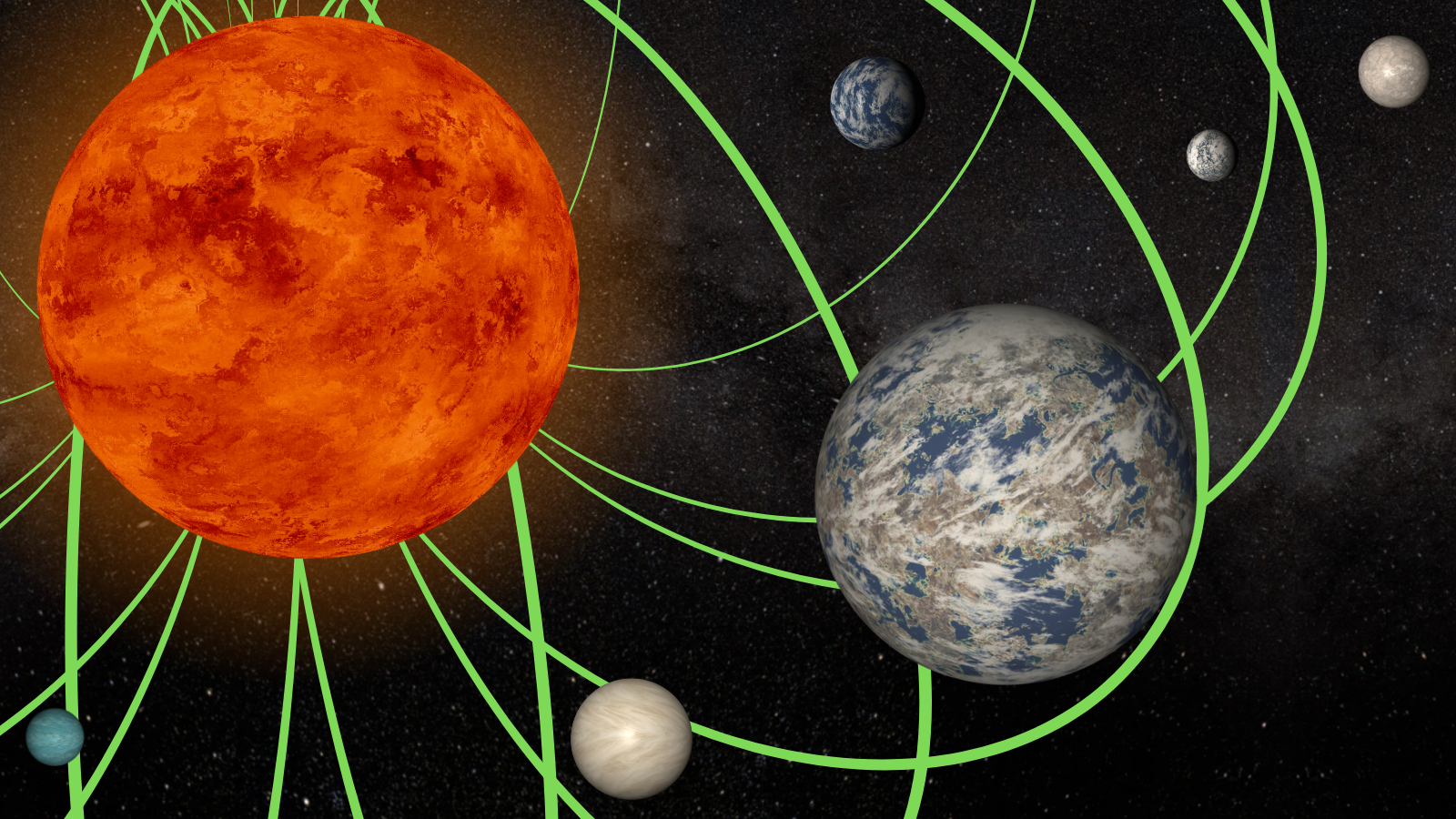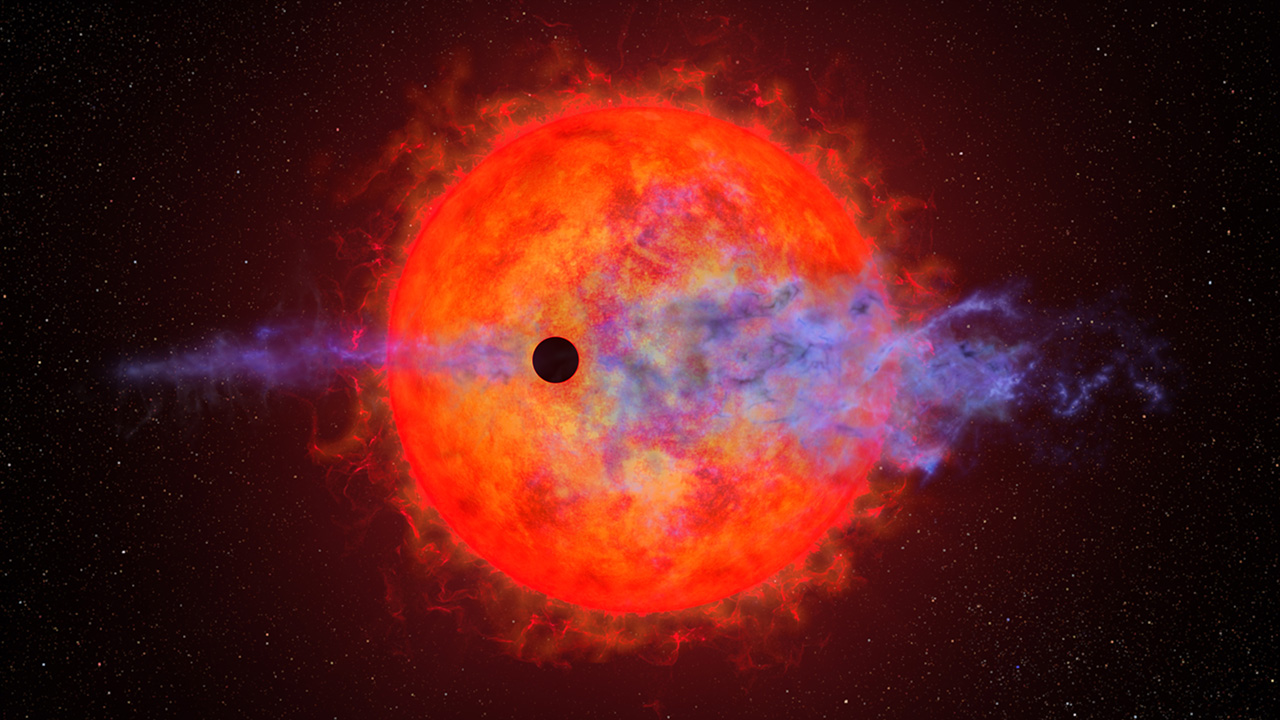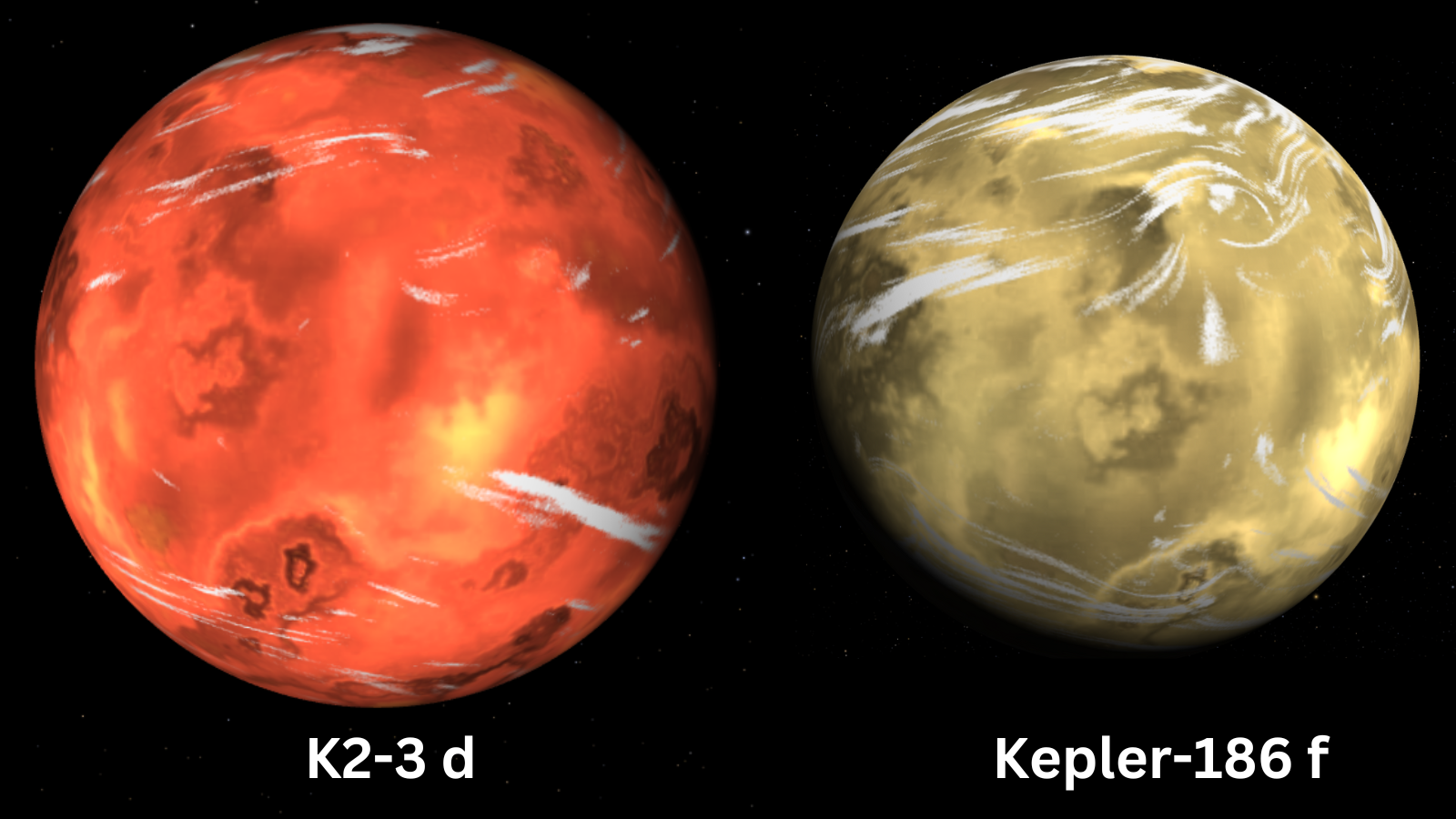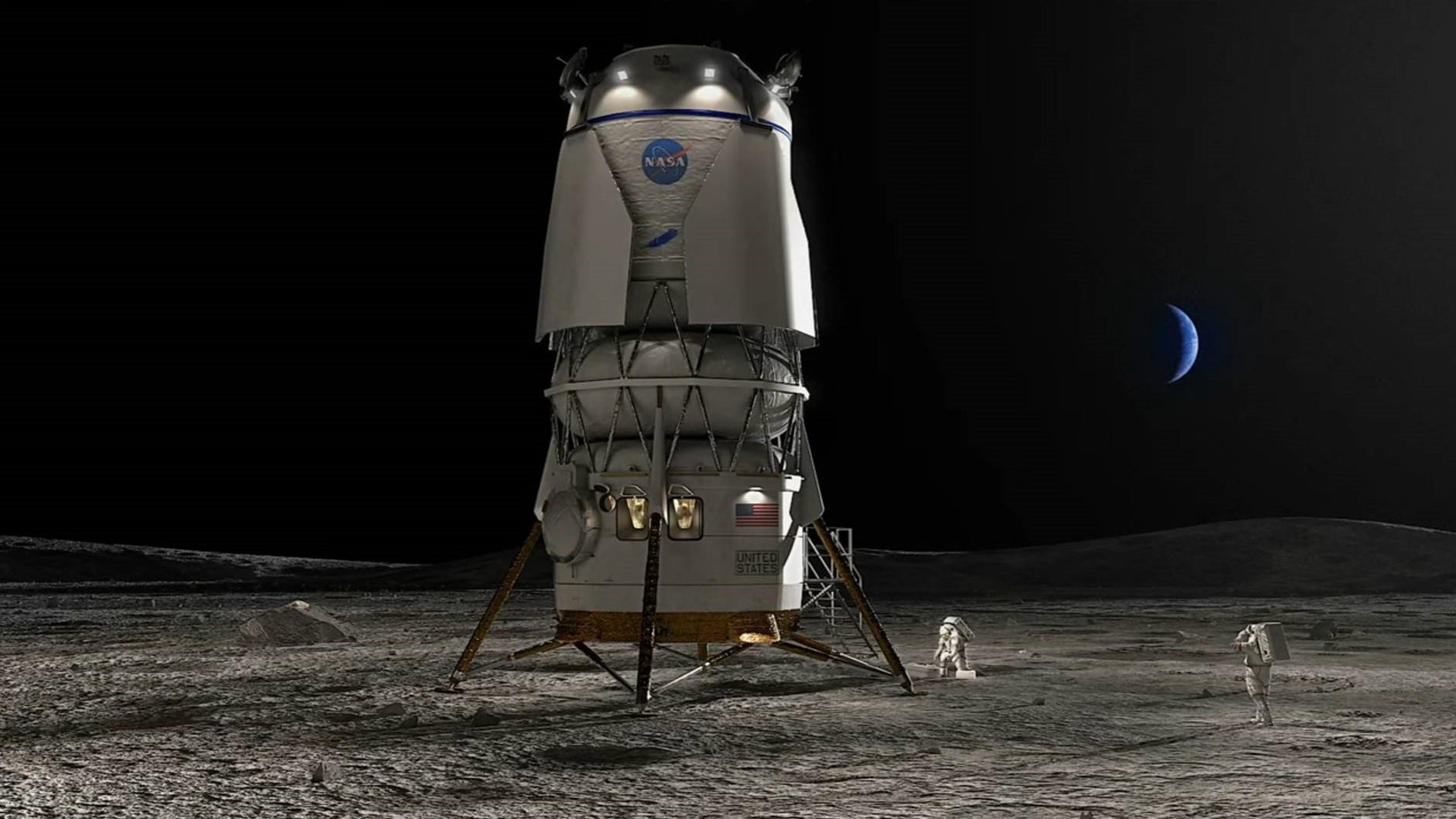How stars' magnetic fields could impact the chance for life on orbiting planets
"The fascination with exoplanets stems from our desire to understand our own planet better."

The chances of a planet hosting life depends on more than just its proximity to its parent star, and the amount of radiation it receives. New research looks at the impact a star's magnetic field has on exoplanet habitability.
You may be familiar with the so-called "Goldilocks zone" around stars, which gets its name from the fact that it is the region around a star where it's neither too hot nor too cold for a planet to host liquid water. Yet, despite the alternate name for this region — "The Habitable Zone" — merely existing in this band still doesn't guarantee that a planet will be suitable for life.
Well, life as we know it, at least.
For instance, in our solar system, Venus, Earth and Mars are all within the sun's habitable zone, yet only our planet currently has the right conditions for life (as far as we currently know). That has prompted scientists to investigate the conditions around other stars and their respective worlds.
This new work redefines the Goldilocks zone to also factor in the magnetic field of its star. By adding such extra criteria, the team offers a more nuanced picture of life in the universe.
Related: 25 years of exoplanet hunting hasn't revealed Earth 2.0 — but is that what we're looking for?
"The fascination with exoplanets stems from our desire to understand our own planet better," team leader David Alexander, director of the Rice Space Institute and a professor of physics and astronomy, said in a statement. "Questions about the Earth's formation and habitability are the key drivers behind our study of these distant worlds."
Get the Space.com Newsletter
Breaking space news, the latest updates on rocket launches, skywatching events and more!
Stellar magnets, how do they work?
The presence of a magnetic field around a planet is one of the key factors in its ability to host life. For example, we know that without Earth's magnetosphere, complex molecules needed for life on our world would be broken apart due to harsh radiation and high-energy charged particles flowing from the sun in the solar wind.
Additionally, it is thought that the reason Mars is dry and arid today, despite having flowed with liquid water in its distant past, is because of the lack of a planetary magnetic field. This allowed charged solar particles to strip away its atmosphere over time. That forced the Red Planet to lose most of its liquid water to space, thus depleting its habitability.
Yet, there is another way in which a planet's magnetic field is important to its habitability, and that is through its interaction with the magnetic field of its star. The magnetic field of a planet must be strong enough to shield it from the bombardment of charged particles coming from its star, yes, but it must also be far enough away from this stellar magnetic field to avoid direct contact and prevent a powerful event called "magnetic reconnection" from occurring.

Alexander and colleagues assessed magnetic interactions between exoplanets and their host stars, factoring in "space weather," which is the effect of stellar wind bombardment on planetary magnetic fields and atmospheres. To do this, they defined stellar activity using a value called the "Rossby number," which is the ratio between a star's rotational period to the time it takes for its layers to rise and sink due to a phenomenon called "convection," or the star's "convective turnover."
Once this was done, the team could estimate another important value: the star's "Alfvén radius," which defines the point at which the stellar wind from that star becomes disconnected or "decoupled" from the star and its magnetic field. The researchers then assessed 1,546 exoplanets to see if the worlds orbited their stars within each respective stellar body's Alfvén radius.

The team found just two planets outside their stars' Alfvén radius, which were thus distant enough to host liquid water and exhibited strong enough magnetic fields to withstand stellar wind bombardment.
The first was K2-3 d, a super-Earth that's 1.5 times as wide as our planet with 2.2 times its mass; it's located 144 light-years from the solar system. The other was Kepler-186 f, which is slightly smaller than K2-3 d but still larger than Earth with a mass 1.7 times that of our planet. This second planet is located 579 light-years from the solar system.
"While these conditions are necessary for a planet to host life, they do not guarantee it," said research lead author Anthony Atkinson, a Rice University graduate. "Our work highlights the importance of considering a wide range of factors when searching for habitable planets."
The scientists will follow up on these findings by continuing to explore and investigate exoplanets and the planetary systems in which they dwell — while simultaneously applying their knowledge of our own solar system to these discoveries.
The hope is that this will help develop a framework that finally helps us answer the most fundamental question: Are we alone in the cosmos?
The team's research was published on July 9 in The Astrophysical Journal.
Join our Space Forums to keep talking space on the latest missions, night sky and more! And if you have a news tip, correction or comment, let us know at: community@space.com.

Robert Lea is a science journalist in the U.K. whose articles have been published in Physics World, New Scientist, Astronomy Magazine, All About Space, Newsweek and ZME Science. He also writes about science communication for Elsevier and the European Journal of Physics. Rob holds a bachelor of science degree in physics and astronomy from the U.K.’s Open University. Follow him on Twitter @sciencef1rst.
-
Unclear Engineer Interesting that "super Earth" K2-3 d, with a mass 2.2 times Earth's and a diameter 1.5 times Earth's should produce a surface gravity about the same as Earth's.Reply
I wonder how good we are at detecting planets about the mass of Earth that are orbiting stars that are about the mass of our Sun at a distance of about 1 AU. It seems like we are better at detecting more massive planets that are closer to less massive stars.
So, maybe there are more planets out there that we are not yet detecting that fit these life-supporting criteria? -
rod FYI, this exoplanet is updated today showing 7033 exoplanets now, https://exoplanet.eu/home/Reply
I updated my MS ACCESS DB copy and ran my MS SQL queries. 5190 have orbital periods 370 days or less and average mass 4.18 Mjup. We have plenty of exoplanet data now to proclaim to the public if any have life on them and ET phoning home, IMO :) I am still waiting to see Charles Darwin warm little pond from his 1871 letter confirmed (life from non-living matter), here on earth and among the many exoplanets now :) -
Unclear Engineer Rod, that "warm little pond" may really have been a hot hydrothermal vent in the bottom of an ocean along a mid-ocean ridge. So, maybe tectonics are required along with the water.Reply
There are some recent articles on looking for early life chemistries on Earth, before ATP, and the Mars rover just found a rock that looks like it had biological activity billions of years ago.
So, I expect that we will relatively soon have a pretty good idea about how life began here and might also have begun on Mars.
If the persistence of water requires a magnetic planetary field that is decoupled from the star's magnetic field, and plate tectonics requires water, that has some interesting effects on the parameters for the Drake Equation. -
alfmagne Reply
The Drake equation should add a new factor ‘fm’ for magnetic field protecting the planet.Unclear Engineer said:Rod, that "warm little pond" may really have been a hot hydrothermal vent in the bottom of an ocean along a mid-ocean ridge. So, maybe tectonics are required along with the water.
There are some recent articles on looking for early life chemistries on Earth, before ATP, and the Mars rover just found a rock that looks like it had biological activity billions of years ago.
So, I expect that we will relatively soon have a pretty good idea about how life began here and might also have begun on Mars.
If the persistence of water requires a magnetic planetary field that is decoupled from the star's magnetic field, and plate tectonics requires water, that has some interesting effects on the parameters for the Drake Equation. -
Catastrophe Replyhttps://www.mdpi.com/2673-4125/4/1/1
it remains somewhat unclear if Homo sapiens use exogenous magnetic fields to regulate function and what can happen if the boundary condition of the GMF no longer exerts an effect. Proposed deep space flights to destinations such as Mars will provide some insights, as space flight could not have been anticipated by evolution. The results of such space flight “experiments” will provide new insights into the role of magnetic fields on human functioning.
Cat :) -
Torbjorn Larsson This is very speculative work. The effects of geodynamo fields are unclear since the atmospheric erosion is simply concentrated to the poles, and e.g. Venus show that thick atmospheres can exist on Earth massed terrestrial planets closer than the habitable zone.Reply
That is in general true, more so for the radial velocity method but also to some degree for the transit method as a closer planet covers more spatial angle and so can be more easily seen from afar.Unclear Engineer said:It seems like we are better at detecting more massive planets that are closer to less massive stars. -
Torbjorn Larsson Reply
Early Earth was sterile and now it is not, so the general idea has been tested. If you mean Darwin's hypothesis specifically, as Unclear Engineer mentions the current data confirms that a deep ocean hydrothermal vent was the geology involved in the split between biology and geology - those vents seems to be our ancestors.rod said:I am still waiting to see Charles Darwin warm little pond from his 1871 letter confirmed (life from non-living matter), here on earth and among the many exoplanets now :)
https://www.nature.com/articles/nmicrobiol2016116]
That is unlikely, and MDPI is not a reputable scientific source that should be cited for science.Catastrophe said:it remains somewhat unclear if Homo sapiens use exogenous magnetic fields
MDPI's business model is based on establishing entirely open access broad-discipline journals, with fast processing times from submission to publication and article processing charges paid by the author, their institutions or funders. MDPI's business practices have attracted controversy, with critics suggesting it sacrifices editorial and academic rigor in favor of operational speed and business interests. MDPI was included on Jeffrey Beall's list of predatory open access publishing companies in 2014 but was removed in 2015 following a successful appeal while applying pressure on Beall's employer. Some journals published by MDPI have also been noted by the Chinese Academy of Sciences and Norwegian Scientific Index for lack of rigor and possible predatory practices.
https://en.wikipedia.org/wiki/MDPI#Controversies
It is unknown whether humans can sense magnetic fields. The ethmoid bone in the nose contains magnetic materials. Magnetosensitive cryptochrome 2 (cry2) is present in the human retina. Human alpha brain waves are affected by magnetic fields, but it is not known whether behaviour is affected.
https://en.wikipedia.org/wiki/Magnetoreception -
rod Well, some interesting discussion :) Charles Darwin warm little pond in his 1871 letter, he did acknowledge that looking for non-living matter evolving into life on earth today in a warm little pond, some other living organism(s) would come along and eat it so you could not see this take place in nature today. Whatever tests are used to *confirm* this view of the origin of biological life presented to the public, a complete and accurate database should show all the tests conducted, those that *confirmed* and all those that *failed* to the public. Meteorite ALH84001 during Clinton Admin was praised because it may have had little Martians in it. That test failed. So far, confirming life on exoplanets has failed as well as other locations in our solar system outside of planet Earth showing biological life.Reply
TESS now shows 543 confirmed exoplanets. Mean period = 15.14 days with min 0.32 day, max about 483 days. Mean radii size 5.845 earth radii.
https://exoplanetarchive.ipac.caltech.edu/index.html
TESS has not shown an exoplanet confirmed with biological life on it. -
Unclear Engineer We aren't really going to be able to "confirm" life on another celestial body until we can see a sample in a lab. The closest we are now is that rock that the Mars rover just imaged. See /nasa-perseverance-mars-rover-rock-ancient-life . There are just too many unknown unknowns to be able to conclusively say that life exists on another planet orbiting another star based only on remote sensing of chemicals in their atmospheres. (Of course receiving a transmission from an intelligent species would leapfrog all of that.)Reply
As for unraveling how life arose from abiotic chemistry on Earth, the research has been stymied on the fact that life uses the chemical ATP for energy processing, and the reactions that we know of that make ATP all require ATP to be used in their processes. So, the question is how did the first life work without ATP and how did it manage to make the first ATP? Some insights on how that might have happened are here: https://www.tec5usa.com/decoding-life-s-origins-with-lost-biochemical-clues/ . -
rod Reply
Does this ATP model show how DNA and RNA arose in the first cell and then the genetic code appears, allowing life to change onwards and upwards into what we see today, like plants and trees? Life on other exoplanets is indeed challenging to show.Unclear Engineer said:We aren't really going to be able to "confirm" life on another celestial body until we can see a sample in a lab. The closest we are now is that rock that the Mars rover just imaged. See /nasa-perseverance-mars-rover-rock-ancient-life . There are just too many unknown unknowns to be able to conclusively say that life exists on another planet orbiting another star based only on remote sensing of chemicals in their atmospheres. (Of course receiving a transmission from an intelligent species would leapfrog all of that.)
As for unraveling how life arose from abiotic chemistry on Earth, the research has been stymied on the fact that life uses the chemical ATP for energy processing, and the reactions that we know of that make ATP all require ATP to be used in their processes. So, the question is how did the first life work without ATP and how did it manage to make the first ATP? Some insights on how that might have happened are here: https://www.tec5usa.com/decoding-life-s-origins-with-lost-biochemical-clues/ .
